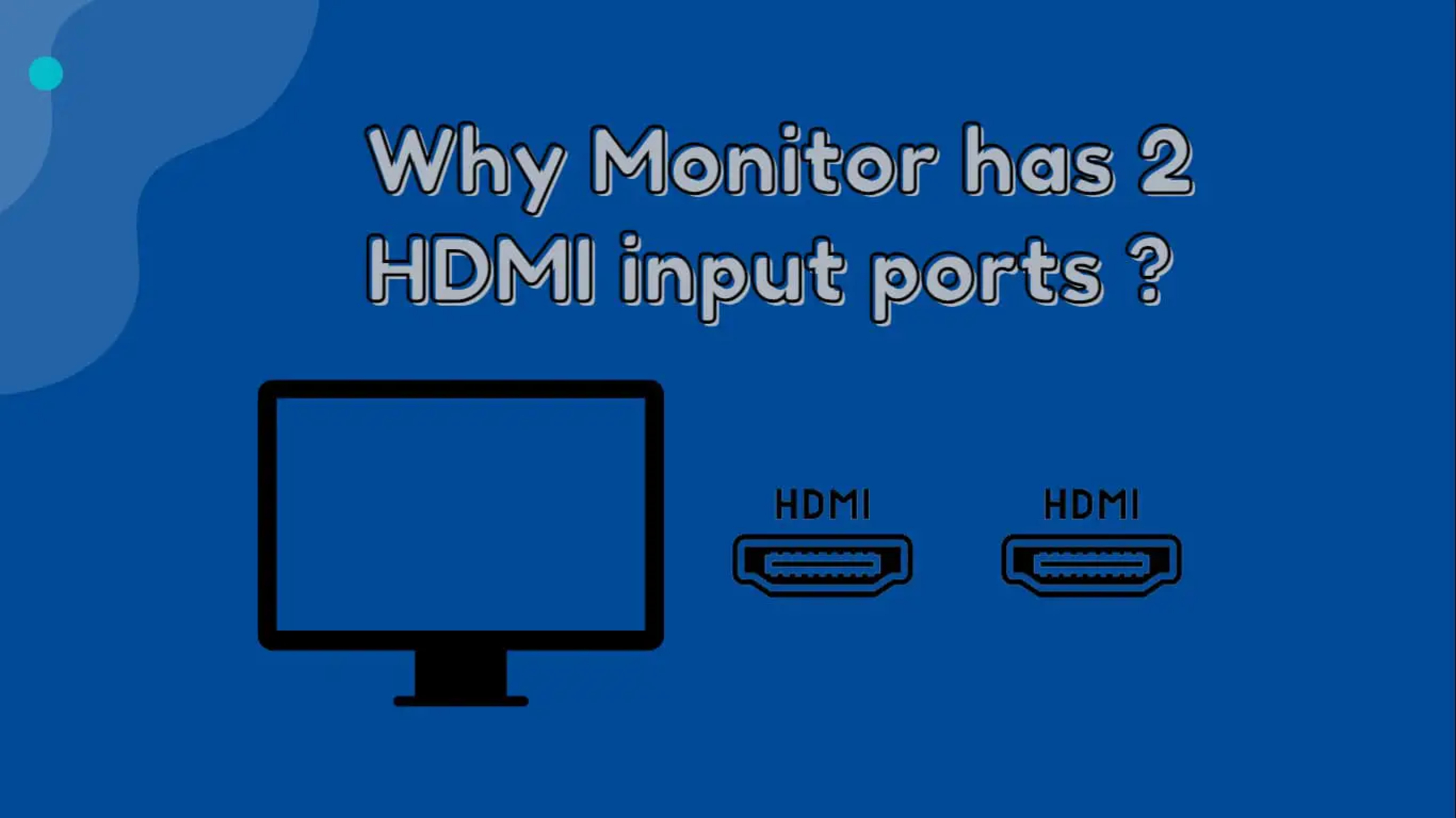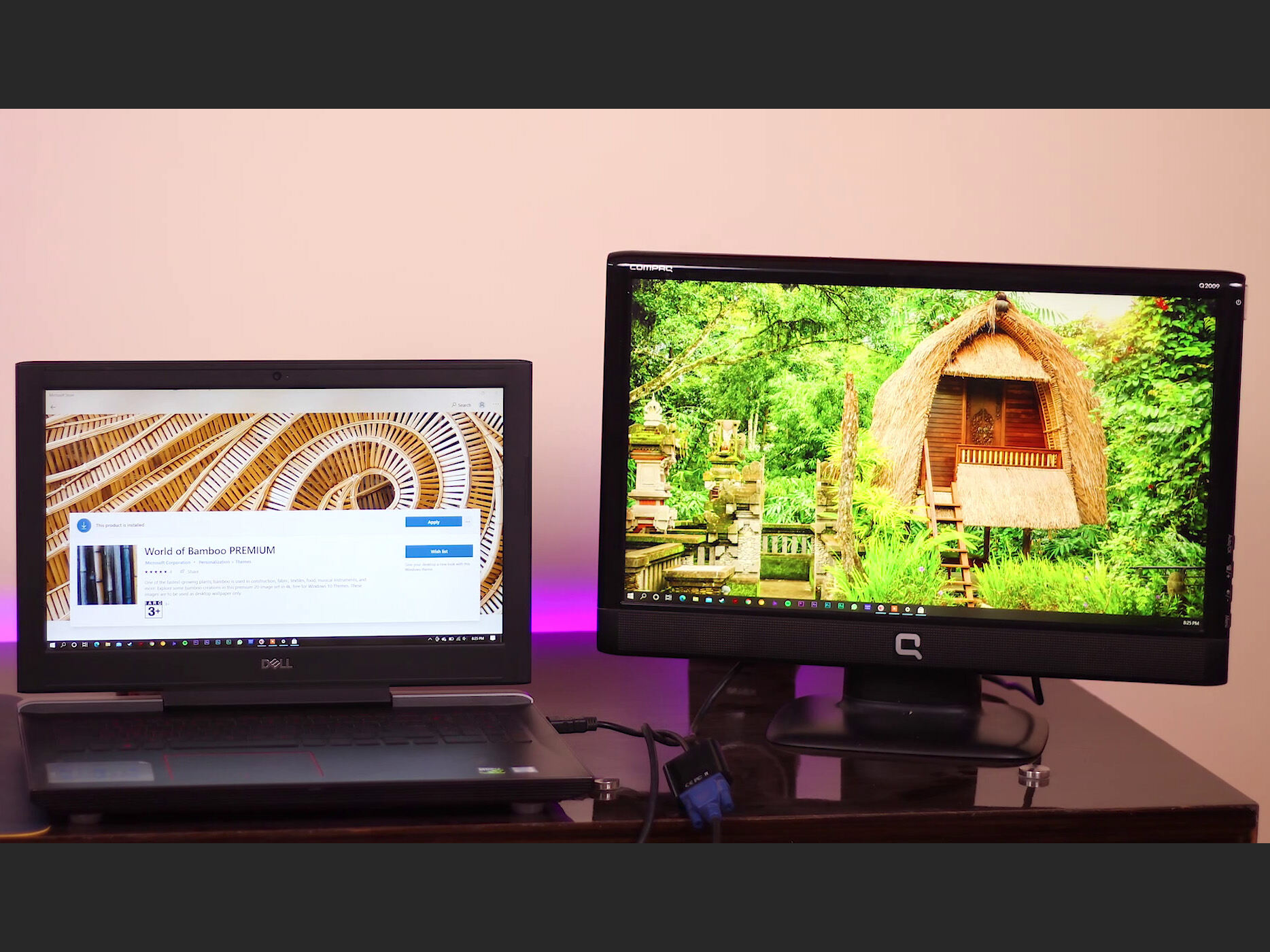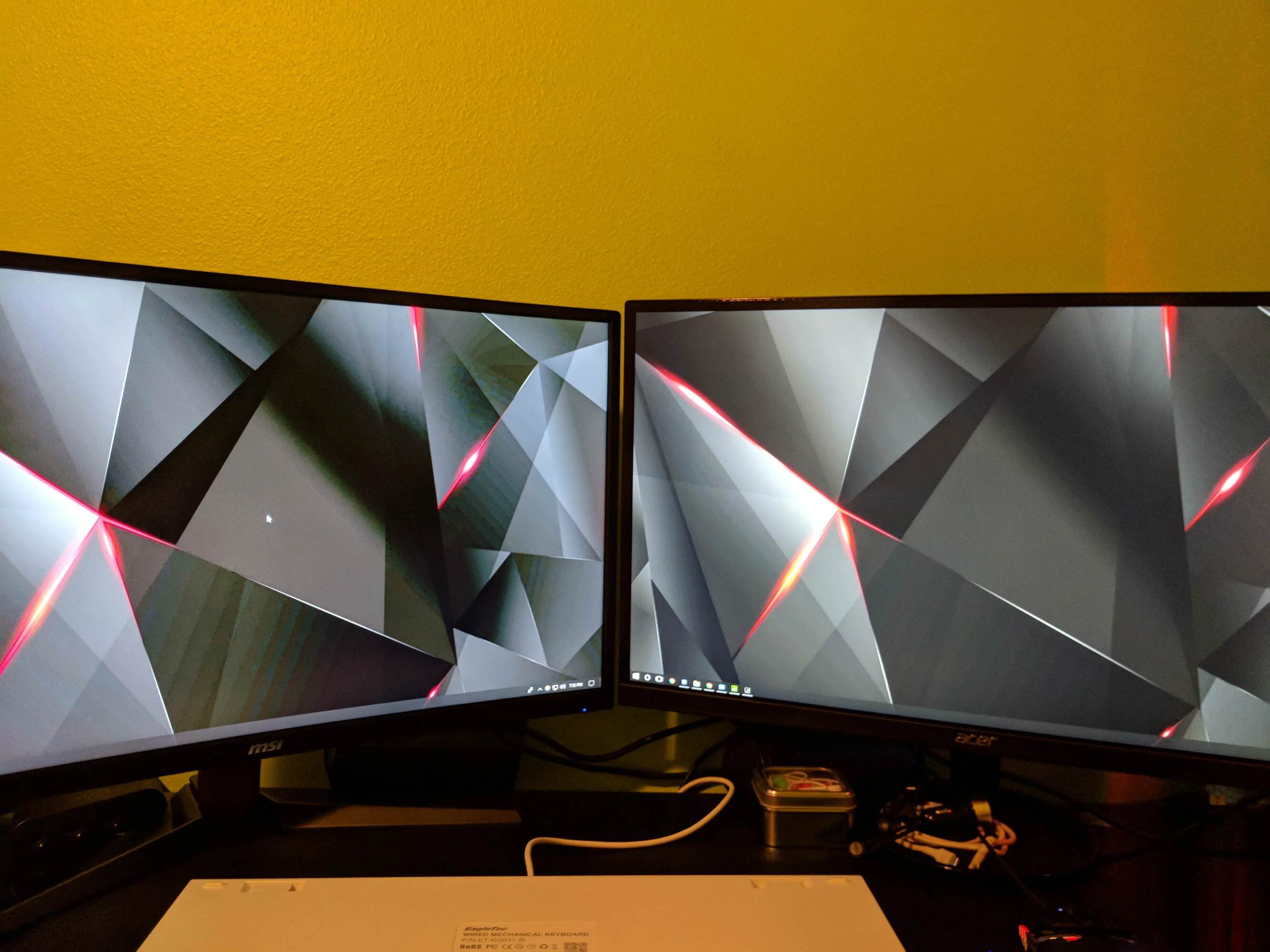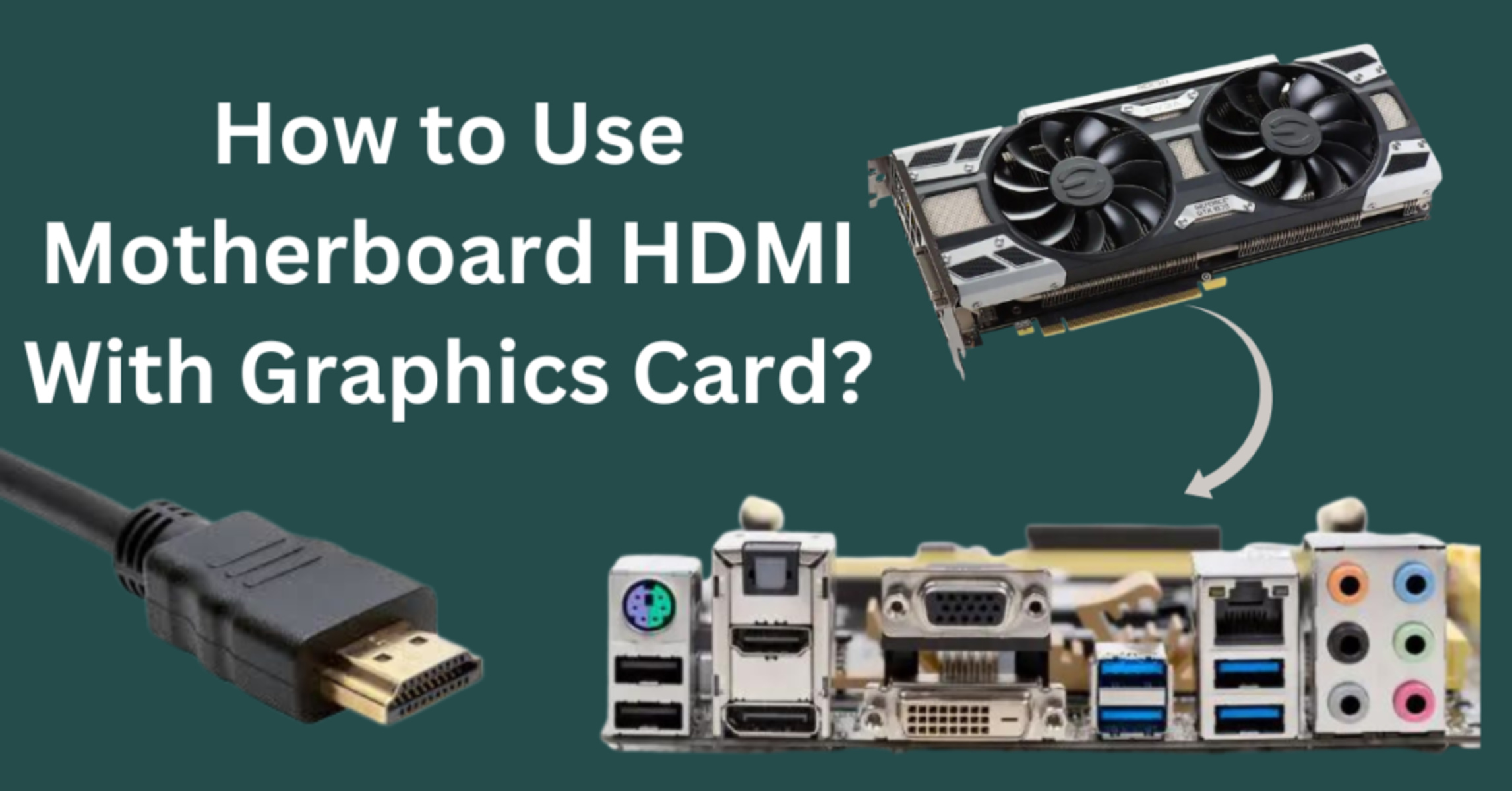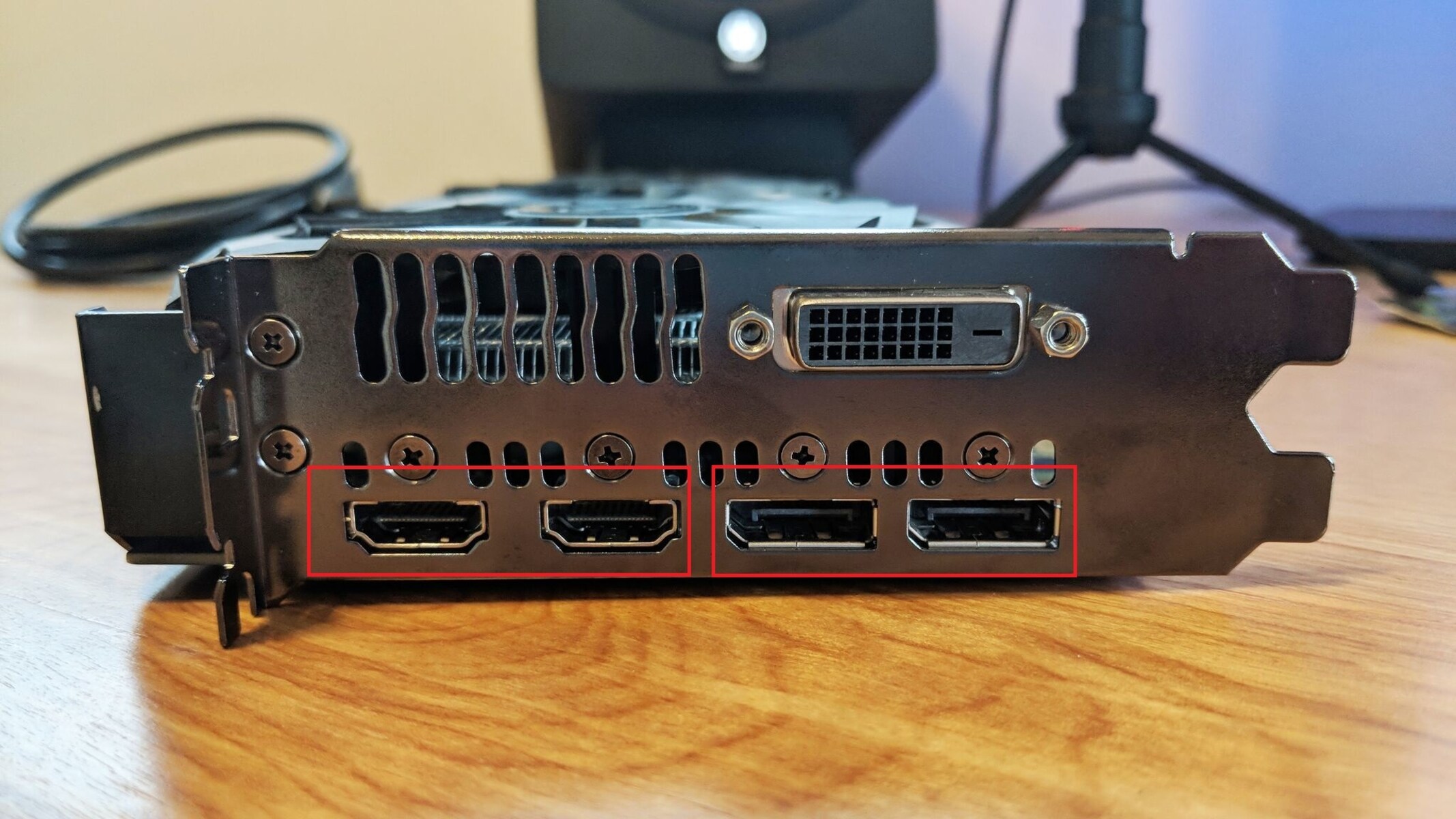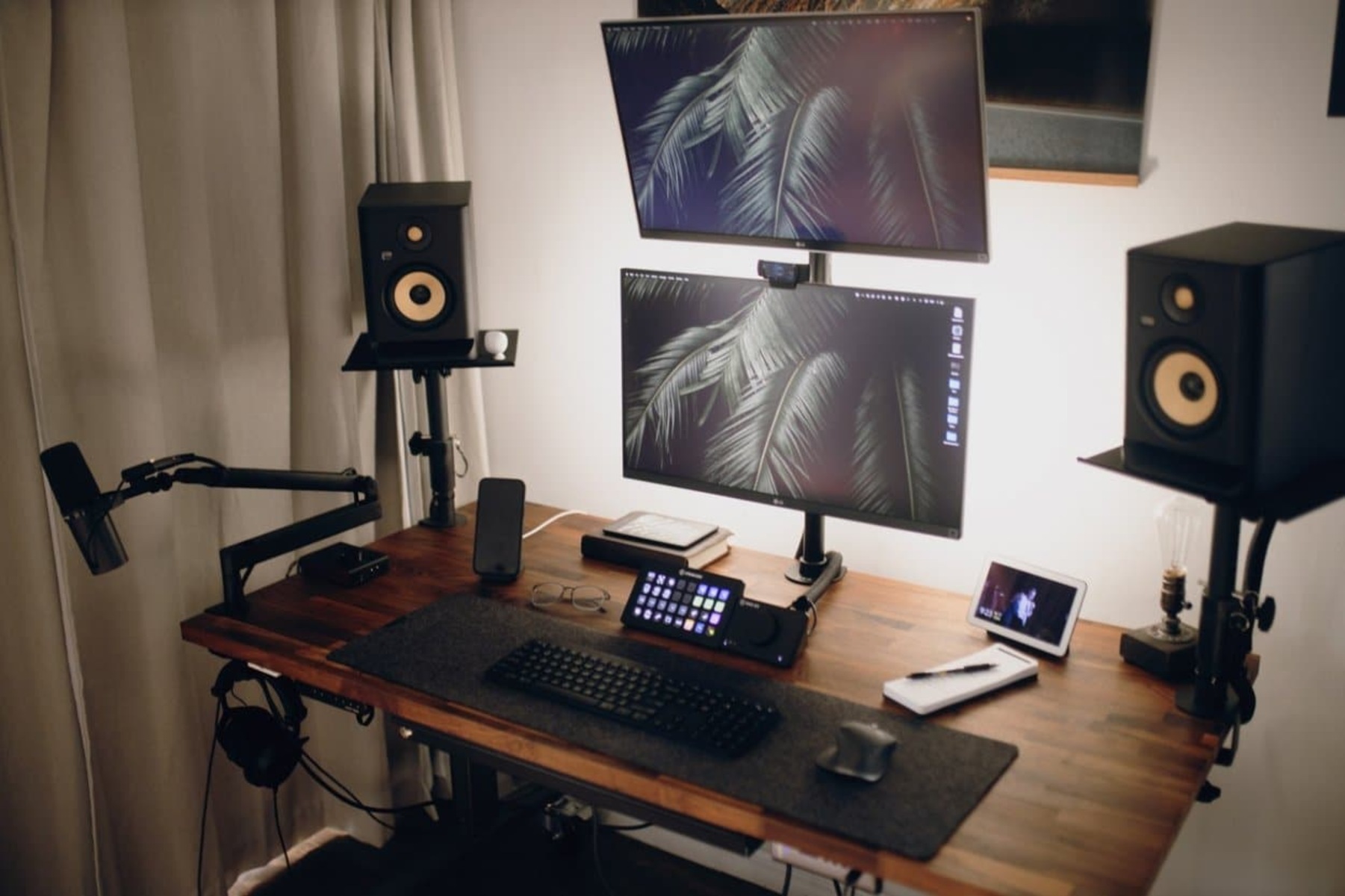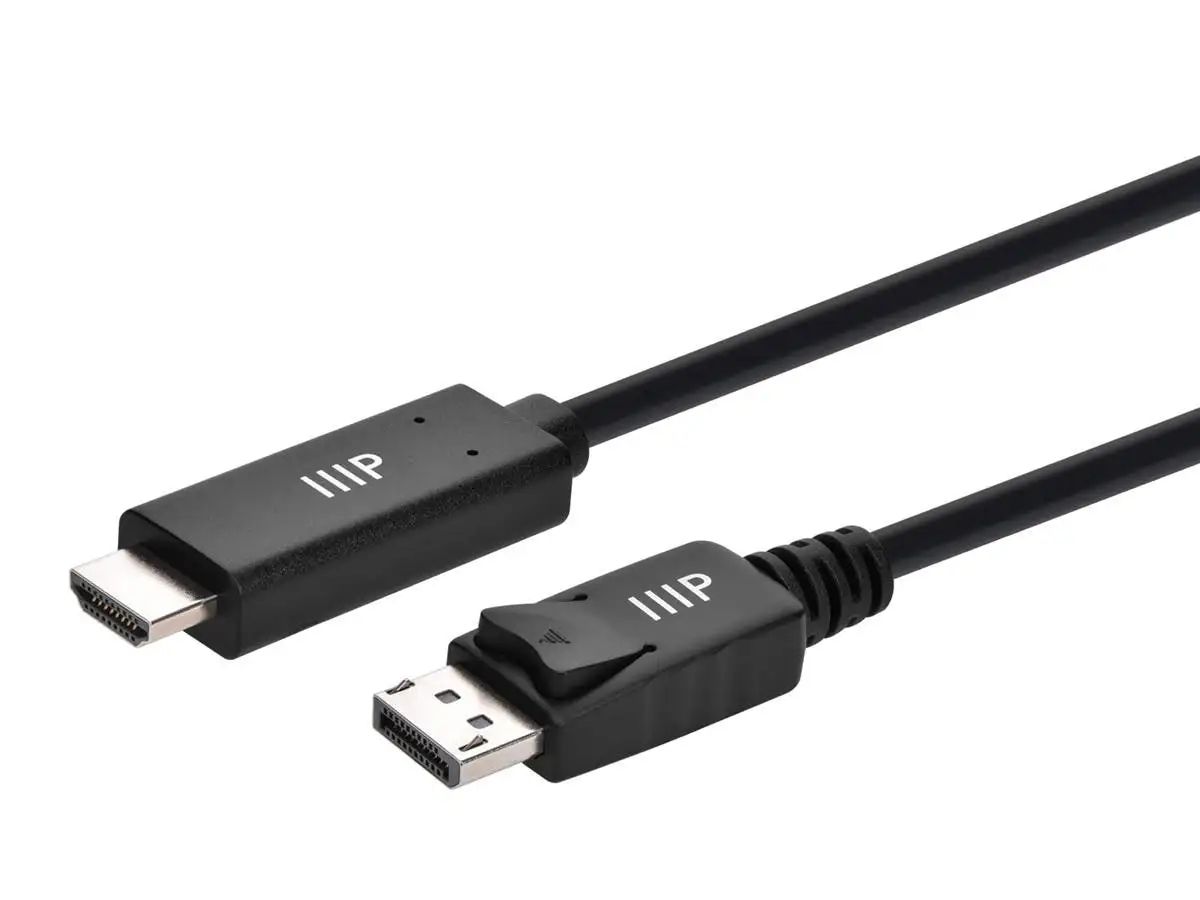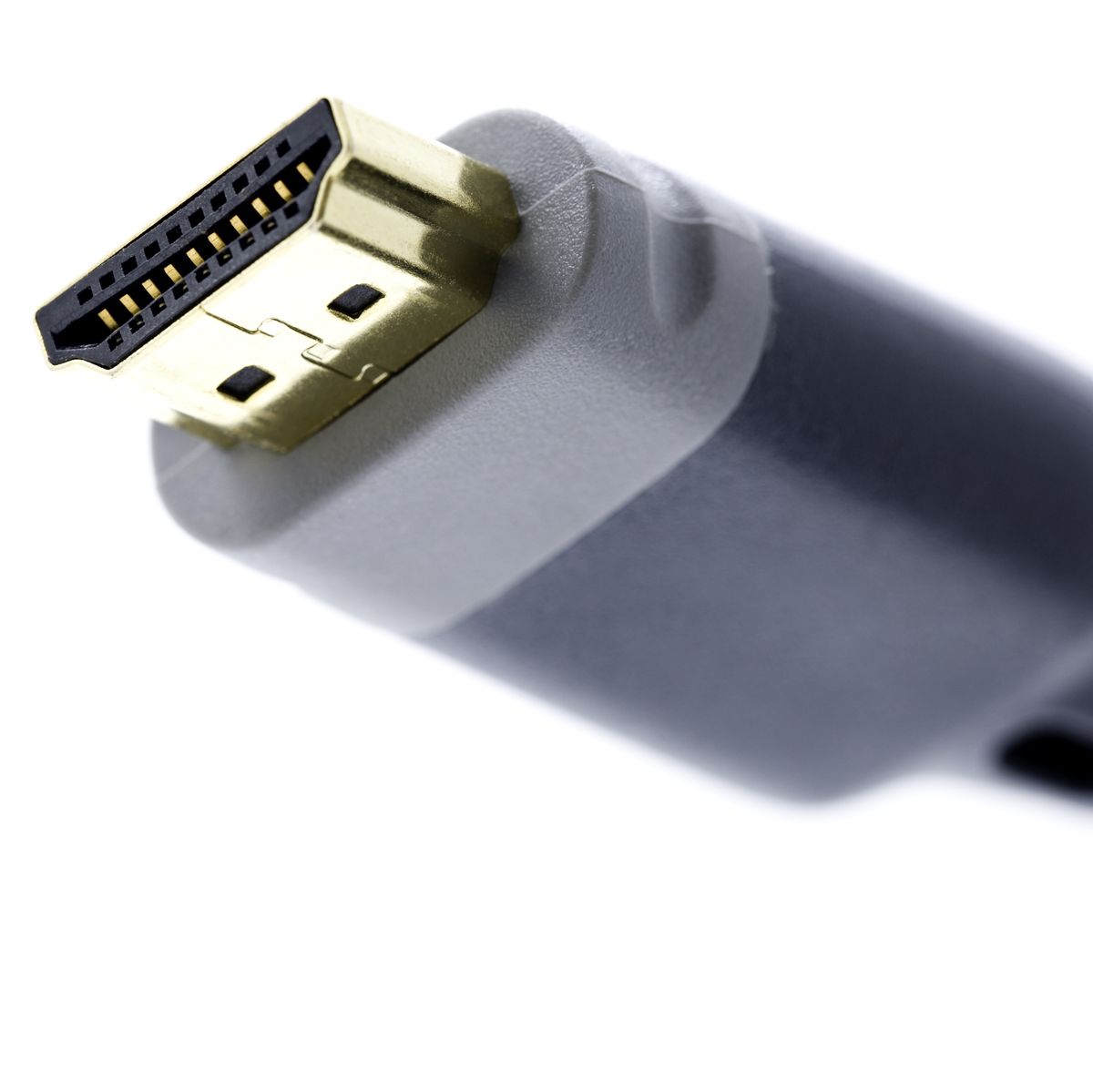Introduction
Welcome to the world of monitors, where high-definition visuals and immersive audio come together to create an unforgettable viewing experience. As you explore the market for the perfect monitor, you may have come across an intriguing feature – the presence of multiple HDMI ports.
In this article, we will delve into the fascinating world of HDMI ports and understand their significance in modern monitors. If you’ve ever wondered why a monitor would need two HDMI ports or what benefits they offer, you’ve come to the right place. Whether you’re a gaming enthusiast, a creative professional, or someone who enjoys multi-tasking, understanding the functionality of these ports can greatly enhance your monitor setup.
So, let’s dive into the details and discover why monitors boast the luxury of two HDMI ports.
First, let’s understand the basics of HDMI ports. HDMI, or High-Definition Multimedia Interface, is a standardized audio and video interface that allows seamless transmission of high-quality digital signals from a source device to a display device. These ports are commonly found on modern televisions, projectors, and of course, monitors.
With the rapid advancement in technology, the demand for versatile monitors has increased exponentially. People now desire displays that can handle multiple inputs, offer enhanced audio capabilities, and provide seamless connectivity with various devices. This is where the importance of multiple HDMI ports becomes evident.
One of the primary reasons for having multiple HDMI ports on a monitor is to facilitate a dual monitor setup. In a dual monitor configuration, you can connect two separate displays to your computer or gaming console, effectively doubling your screen real estate. This enables you to work on multiple tasks simultaneously, increasing productivity, or enjoy a truly immersive gaming experience with a larger field of view.
Furthermore, HDMI ports offer the convenience of connecting different devices directly to your monitor. Whether it’s gaming consoles, Blu-ray players, streaming devices, or even PCs, having multiple HDMI ports allows you to easily switch between devices without the hassle of constantly swapping cables.
It’s worth mentioning that different HDMI versions offer varying data bandwidth and support different resolutions and features. Therefore, having multiple HDMI ports ensures compatibility with a wide range of devices and allows you to fully utilize the capabilities of your monitor.
Now that we’ve established the importance of HDMI ports and the potential benefits of having two, let’s dive deeper into the different uses of HDMI ports. In the next section, we will explore the various scenarios where dual HDMI ports can elevate your multimedia experience. So, buckle up and get ready to elevate your viewing pleasure!
Understanding HDMI Ports
Before we delve into the advantages of having multiple HDMI ports on a monitor, let’s first understand the basics of HDMI ports and their capabilities.
HDMI, which stands for High-Definition Multimedia Interface, is a digital interface that transmits both high-quality audio and video signals through a single cable. It has become the standard port for connecting various multimedia devices, including monitors, televisions, gaming consoles, and sound systems.
HDMI ports come in different versions, with each version offering varying capabilities and features. The most common HDMI versions include HDMI 1.4, HDMI 2.0, and HDMI 2.1. These versions differ in terms of their data transfer speed, maximum resolution support, audio formats, and additional features such as support for HDR (High Dynamic Range) and variable refresh rate.
When it comes to monitors, HDMI ports serve as the primary method of connecting your display to an external device. This could be a computer, laptop, gaming console, media player, or any other device that supports HDMI output. The HDMI port on your monitor acts as an input, allowing you to connect various devices and enjoy high-quality audio and video.
One HDMI port on a monitor can already provide you with a seamless connection to an external device. However, having multiple HDMI ports offers enhanced flexibility and convenience. With two HDMI ports, you have the ability to simultaneously connect and switch between multiple devices without the need for adapters or additional cables.
It’s also important to consider the HDMI version supported by your monitor. When purchasing a monitor, make sure it supports the HDMI version required by your devices, especially if you plan to utilize advanced features like HDR or high refresh rates.
In addition to the standard HDMI ports, some monitors also offer specialized HDMI ports, such as HDMI-MHL (Mobile High-Definition Link) or HDMI-ARC (Audio Return Channel). HDMI-MHL allows you to connect and charge compatible mobile devices, while HDMI-ARC enables audio to be transmitted from your monitor to a sound system, eliminating the need for a separate audio cable.
Now that we have a better understanding of HDMI ports and their capabilities, let’s explore the different uses and advantages of having multiple HDMI ports on a monitor. In the next section, we will discuss how dual HDMI ports can enhance your viewing experience and offer greater convenience in various scenarios.
Different Uses of HDMI Ports
Having multiple HDMI ports on a monitor opens up a world of possibilities and allows you to expand your multimedia experience in various ways. Let’s explore some of the different uses and advantages of having multiple HDMI ports:
1. Dual Monitor Setup: One of the primary uses of having two HDMI ports on a monitor is to facilitate a dual monitor setup. This setup involves connecting two separate displays to your computer or gaming console. By extending your desktop across two monitors, you gain additional screen real estate for multitasking, increased productivity, and a seamless workflow. It’s particularly useful for professionals working with graphics, video editing, programming, or anyone who needs to work with multiple applications simultaneously.
2. Video and Audio Input: HDMI ports are not limited to just connecting to computers or gaming consoles. With multiple HDMI ports, you have the flexibility to connect various multimedia devices, such as Blu-ray players, DVD players, cable/satellite boxes, streaming devices, and even cameras. This allows you to enjoy high-definition video content and immersive audio directly through your monitor without the need for additional cables or converters.
3. Connection to Multiple Devices: Having two HDMI ports on a monitor eliminates the hassle of constantly swapping cables when connecting and switching devices. You can keep one HDMI port dedicated to your computer or gaming console and use the other port for additional devices, such as a streaming device or a secondary gaming console. This makes it convenient to switch between multiple devices without the need to reconfigure your setup every time.
4. Multiplayer Gaming: If you’re an avid gamer, having multiple HDMI ports can greatly enhance your gaming experience. You can connect different gaming consoles or PCs to separate HDMI ports and easily switch between them when playing with friends or family. This saves time and eliminates the need for complex cable management, allowing everyone to jump into the action quickly.
5. Multiple Displays: In addition to a dual monitor setup, having two HDMI ports also allows you to connect multiple displays to your computer or gaming console. This is especially useful for tasks that require a large workspace, such as video editing, 3D modeling, or music production. By having multiple monitors connected through HDMI ports, you can distribute your work across different displays, enabling a more efficient and visually immersive workflow.
These are just a few examples of how multiple HDMI ports on a monitor can be used to enhance your multimedia experience. It provides flexibility, convenience, and expands your connectivity options, allowing you to explore a wide range of multimedia devices and setups.
Now that we’ve explored the different uses of HDMI ports, let’s move on to the next section, where we will discuss the benefits of a dual monitor setup in more detail.
Dual Monitor Setup
A dual monitor setup is a configuration that involves connecting two separate displays to your computer or gaming console. This setup offers a wide range of benefits and can greatly enhance your productivity, gaming experience, and overall workflow. Let’s delve deeper into the advantages of a dual monitor setup:
1. Increased Screen Real Estate: One of the biggest advantages of a dual monitor setup is the expanded screen real estate. By extending your desktop across two displays, you essentially have a larger workspace to work with. This is particularly beneficial for professionals who need to work with multiple applications or windows simultaneously – you can have a spreadsheet open on one monitor while referencing data from a web browser open on the other.
2. Seamless Workflow and Productivity: With two monitors, you can organize your tasks more efficiently and work on multiple projects simultaneously. For example, graphic designers can have their design software open on one monitor while keeping reference images or resource files on the other monitor. This eliminates the need to constantly switch between windows and allows for a more focused and streamlined workflow, ultimately boosting productivity.
3. Multitasking Made Easy: Dual monitors make multitasking a breeze. You can keep your email client, messaging apps, or social media feeds open on one monitor while working on your main task on the other. This allows for quicker responses to messages, easier collaboration, and the ability to stay connected without interrupting your workflow.
4. Enhanced Gaming Experience: Gamers can take their gaming experience to a whole new level with a dual monitor setup. With the main game displayed on one monitor, you can use the secondary monitor to keep an eye on game guides, live streams, or even chat with friends. This not only enhances immersion but also improves overall gameplay and coordination, especially in multiplayer games.
5. More Efficient Video Editing and Content Creation: For video editors, content creators, and other multimedia professionals, a dual monitor setup is a game-changer. You can have your video editing software open on one monitor, while the other monitor displays the timeline, preview window, or additional tools. This allows for a more intuitive and efficient editing experience, speeding up the overall workflow.
These are just a few examples of the advantages a dual monitor setup can offer. The ability to have two displays side by side not only enhances your visual workspace but also provides a smoother and more enjoyable user experience in various activities.
Whether you’re a professional seeking increased productivity, a gamer looking for a competitive edge, or someone who simply wants a more immersive multimedia experience, a dual monitor setup is sure to take your computing experience to the next level.
Now that we’ve discussed the benefits of a dual monitor setup, let’s explore the importance of video and audio input through HDMI ports in the next section.
Video and Audio Input
When it comes to connecting external devices to your monitor, HDMI ports play a crucial role in delivering both video and audio input. Let’s explore the significance of video and audio input through HDMI ports:
1. Seamless High-Definition Video: HDMI ports ensure that high-quality video signals can be transmitted from your source device to your monitor without any loss in quality. Whether you’re watching a movie, playing video games, or editing videos, HDMI provides a seamless and visually stunning experience with support for high-definition resolutions such as 1080p, 4K, and even 8K in the newer HDMI versions.
2. Audio Transmission: Alongside video, HDMI ports also transmit audio signals, eliminating the need for separate audio cables. This simplifies your setup and provides a streamlined audio-visual experience. HDMI supports various audio formats, including stereo and surround sound, allowing you to enjoy immersive and crystal-clear audio output from your monitor’s built-in speakers or external audio devices.
3. One Cable Solution: HDMI provides a convenient one-cable solution for connecting your devices to your monitor. With a single HDMI cable, you can transmit both video and audio signals, reducing cable clutter and simplifying your setup. This is particularly advantageous for multimedia setups, gaming consoles, and home theater systems where multiple components need to be connected.
4. Wide Device Compatibility: HDMI ports are widely supported by a vast range of devices, including gaming consoles, Blu-ray players, set-top boxes, streaming devices, PCs, laptops, and even mobile devices. This compatibility allows you to seamlessly connect various multimedia devices to your monitor, expanding your options for entertainment, productivity, and creative endeavors.
5. Advanced Features: HDMI has evolved over the years, with each new version introducing additional features and capabilities. For example, HDMI 2.0 and HDMI 2.1 support features like HDR (High Dynamic Range), which enhances color and contrast for a more vibrant and realistic viewing experience. Some HDMI versions also support technologies such as HDCP (High-bandwidth Digital Content Protection) and CEC (Consumer Electronics Control), allowing for secure content transmission and simplified control of multiple devices through a single remote.
Overall, video and audio input through HDMI ports ensures a seamless and immersive multimedia experience. Whether you’re watching movies, playing games, or creating content, HDMI ports provide a reliable and high-quality connection between your devices and your monitor.
In the next section, we will explore the convenience and flexibility of connecting multiple devices to your monitor through HDMI ports.
Connection to Multiple Devices
HDMI ports on a monitor offer the convenience and flexibility of connecting multiple devices directly to your display. Let’s explore the advantages and scenarios where connecting multiple devices through HDMI ports becomes advantageous:
1. Hassle-Free Device Switching: Having multiple HDMI ports on your monitor eliminates the need to constantly swap cables when switching between devices. Whether it’s your gaming console, streaming device, or secondary computer, you can simply connect them to different HDMI ports and switch between devices with ease. This saves time and avoids the frustration of untangling cables or reconfiguring settings every time you want to use a different device.
2. Multiple Entertainment Options: By connecting multiple devices through HDMI ports, you have a wide array of entertainment options at your fingertips. For example, you can connect your gaming console to one HDMI port and your streaming device to another. This allows you to enjoy gaming sessions and stream your favorite movies or TV shows without the need for complicated setups or additional switches.
3. Convenient Workstation Setup: HDMI ports on your monitor make it simple to create an efficient workstation setup. You can connect your computer to one HDMI port for your primary work tasks while using the other HDMI port to connect a secondary device, such as a laptop or tablet, for reference material, communication apps, or additional displays. This allows for a more seamless and productive workflow, especially in fields like design, programming, or video editing.
4. Multiple Gaming Consoles: If you’re an avid gamer and own multiple gaming consoles, HDMI ports offer a straightforward solution for connecting them. With multiple HDMI ports on your monitor, you can connect different consoles simultaneously, eliminating the need for extra switches or complicated setups. This allows you to easily switch between consoles and enjoy gaming diversity without the hassle of manually switching cables or rearranging your setup.
5. Collaboration and Presentations: HDMI ports provide a convenient way to connect different devices for collaboration and presentations. Whether it’s a business meeting, classroom setting, or group project, you can connect laptops, tablets, or other devices to your monitor through HDMI ports. This simplifies the sharing of content and allows everyone to view the same screen, fostering better collaboration and communication.
Overall, the ability to connect multiple devices directly to your monitor through HDMI ports offers convenience, flexibility, and expanded possibilities. It simplifies the process of device switching, provides various entertainment options, and enhances productivity in both work and gaming environments.
In the next section, we will discuss troubleshooting tips and the importance of compatibility when dealing with HDMI ports.
Troubleshooting and Compatibility
HDMI ports provide a seamless and convenient way to connect devices to your monitor. However, like any technology, there may be instances where you encounter compatibility issues or require troubleshooting. Let’s explore some common troubleshooting tips and the importance of compatibility when dealing with HDMI ports:
1. Check Cable Connections: If you’re experiencing issues with your HDMI connection, the first step is to ensure that the cables are securely connected. Sometimes, a loose or faulty cable can cause display or audio problems. Disconnect and reconnect the HDMI cables at both the source device and the monitor to ensure a proper connection.
2. Verify HDMI Version and Capabilities: Different HDMI versions support varying resolutions, data transfer speeds, and additional features. Ensure that your devices and cables align with the HDMI version required for your desired setup. For example, if you’re planning to connect a 4K resolution device, make sure the HDMI port on your monitor and the HDMI cable used are capable of supporting it.
3. Adjust Display Settings: It’s essential to check the display settings on your monitor and the connected devices. Ensure that the correct input source is selected on your monitor. Additionally, verify the resolution and refresh rate settings on both the monitor and the source device to ensure they are compatible with each other.
4. Firmware and Driver Updates: Outdated firmware or drivers can sometimes cause compatibility issues with HDMI connections. Check for any available updates for your monitor’s firmware and your device’s drivers. Updating them to the latest versions can potentially resolve compatibility problems and improve overall performance.
5. Test with Different Devices and Cables: If you’re experiencing persistent issues, it’s worth testing the HDMI ports with different devices and cables. This helps identify whether the problem lies with a specific device or cable. By swapping them out and testing various combinations, you can pinpoint the source of the compatibility issue more accurately.
6. Use High-Quality Cables: HDMI cables come in various qualities, with some offering better durability and signal integrity than others. It’s recommended to use high-quality HDMI cables to ensure a reliable connection and avoid potential compatibility problems. Look for cables that are certified for the HDMI version you require and have good shielding to minimize interference.
7. Verify Device Compatibility: In some cases, compatibility issues may arise due to the specific combination of devices being used. It’s essential to check the specifications and compatibility requirements of your devices to ensure they can work seamlessly together. Consult the user manuals or online resources to confirm if there are any known compatibility limitations or requirements.
By following these troubleshooting tips and ensuring compatibility between your devices and HDMI connections, you can overcome many common issues and enjoy a smooth and reliable multimedia experience.
In the next section, we will wrap up our discussion and summarize the key takeaways regarding HDMI ports on monitors.
Conclusion
HDMI ports on monitors play a vital role in delivering high-quality audio and video input, along with offering versatility and convenience for users. The presence of multiple HDMI ports expands the possibilities and enhances the overall multimedia experience. Whether you’re utilizing a dual monitor setup, connecting various devices, or troubleshooting compatibility issues, HDMI ports provide the flexibility and functionality needed for a seamless workflow.
Understanding the basics of HDMI ports, the benefits of a dual monitor setup, the importance of video and audio input, and the convenience of connecting multiple devices are essential for maximizing the potential of your monitor. The ability to enjoy higher screen real estate, seamless switching between devices, enhanced gaming experiences, efficient workstations, and collaborative environments greatly enhances productivity and entertainment.
However, it’s important to ensure compatibility between your devices, use high-quality HDMI cables, and troubleshoot any problems that may arise. Regularly updating firmware, drivers, and checking for the right display settings are crucial in maintaining a reliable and optimized HDMI connection.
In conclusion, HDMI ports are a crucial feature in modern monitors that offer an array of benefits. From increased productivity to immersive gaming experiences, HDMI ports provide the connections needed to enhance your multimedia activities. So, make the most of your monitor’s HDMI ports, and elevate your audio-visual experience to new heights!







